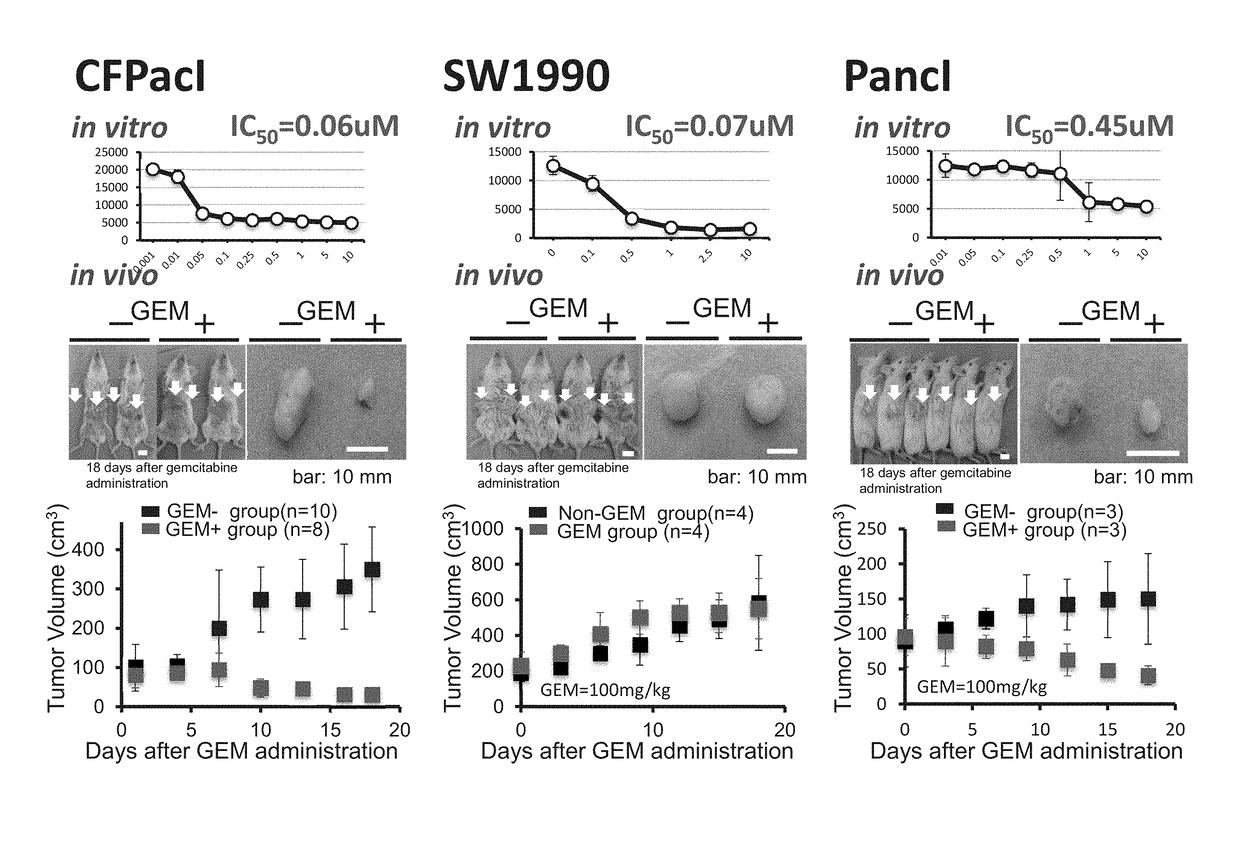Method for reconstituting tumor with microenvironment
a tumor and microenvironment technology, applied in the field of tumor reconstitution methods, can solve the problems of high cost, disadvantageous failure of existing culture methods to reproduce tumors or cancer microenvironments, and inability to achieve the effect of reducing the drug sensitivity of cancer cells
- Summary
- Abstract
- Description
- Claims
- Application Information
AI Technical Summary
Benefits of technology
Problems solved by technology
Method used
Image
Examples
example 1
1. Material and Method
1-1. Human Cell
[0086]The pre-existing human pancreatic cancer cell lines used were CFPAC-1 (ATCC: CRL-1918), PANC-1 (provided by RIKEN BRC: RCB2095), and SW1990 (ATCC: CRL-2172). CFPAC-1 is a cell line established from a lesion with liver metastasis of a 26-year old male. PANC-1 is a cell line established from a primary lesion of a patient of unknown age and sex. SW1990 is a cell line established from a lesion with spleen metastasis of a 56-year old male. In the present study, these cell lines were each introduced and then used at a passage number of 10 or less in experiments.
[0087]Also, human umbilical vein endothelial cells (HUVECs), human mesenchymal stem cells (hMSCs), and these cells transfected with fluorescent reporter gene (EGFP or Kusabira Orange) or luciferase gene were used.
1-2. In Vitro Drug Sensitivity Evaluation of Pre-Existing Human Pancreatic Cancer Cell Line
[0088]Each pre-existing human pancreatic cancer cell line was inoculated at 5×103 cells / ...
PUM
| Property | Measurement | Unit |
|---|---|---|
| volume | aaaaa | aaaaa |
| molecular-weight | aaaaa | aaaaa |
| size | aaaaa | aaaaa |
Abstract
Description
Claims
Application Information
 Login to View More
Login to View More - R&D
- Intellectual Property
- Life Sciences
- Materials
- Tech Scout
- Unparalleled Data Quality
- Higher Quality Content
- 60% Fewer Hallucinations
Browse by: Latest US Patents, China's latest patents, Technical Efficacy Thesaurus, Application Domain, Technology Topic, Popular Technical Reports.
© 2025 PatSnap. All rights reserved.Legal|Privacy policy|Modern Slavery Act Transparency Statement|Sitemap|About US| Contact US: help@patsnap.com



